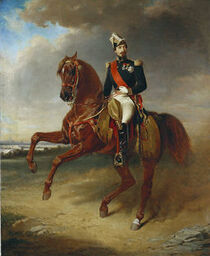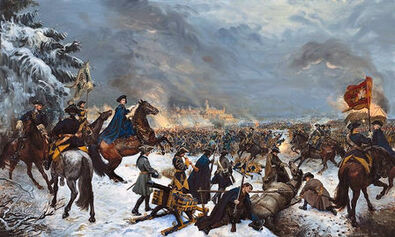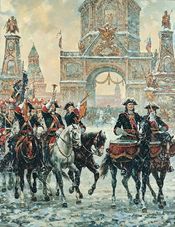The Kingdom of Finland was a monarchy in Europe, forming in 1531 A.D, after declaring itself a sovereign state, following the highly successful Finnish war of independence.

History[]
Civil war and early independence:[]
In 1526, Swedish peasants rose up across the country in rebellion, demanding lower taxes. Gustav I, king of Sweden was assassinated in Karlstad on a royal visit in 1528, launching Sweden into utter chaos. Jarkko Gluskie, a Finnish noble at the time, took advantage of the high unrest, and gathered other nobles together to form a conspiracy against the Swedish government. Gluskie sought support from Sweden's main rival, the Union of Denmark-Norway, who agreed to sign a treaty of independence in 1529. On the eve of October the 8th 1530, Jarkko Gluskie, declared Finland's

Map of the Finnish Empire at its height in 1714 (+ vassals)
unilateral independence, and declared war on the Kingdom of Sweden, quickly silencing pro-Gustav supporters and mobilizing a local army. Denmark-Norway shortly after, declared war on Sweden, sending Danish ships north to blockade Stockholm, and began multiple offensives on the Swedish mainland. Meanwhile, Gustav's army found itself facing mass-desertion by Finnish-born soldiers, joining the Gluskie's revolutionary army. Guerrilla warfare occurred along the Swedo-Finnish border, with groups of rebels repelling the Swedish attacks with high ferocity, while Danish and Norwegian forces connected with each other during the Battle of Gothenburg, which

Portrait of Jarkko I, founding King of Finland looking over at the conquered Swedish capital, circa 1534
resulted in a decisive Dane-Norwegian victory. In November, Sweden attempted a naval invasion of Abo, Finland's de facto capital, which was crushed by the Danish navy in the Battle of the Åland Islands, and cost Sweden many lives. In December, Jarkko Gluskie led a major Winter Offensive across the Torne river, rapidly invading the Swedish north, while the Danish-Norwegian army marched to Stockholm, and laid siege to the city. On February the 18th 1531, Gustav I sued for peace, with the Finnish army reaching as far as Sundsvall, and Danish-Norwegian forces besieging the capital. Denmark-Norway agreed, and with Jarkko Gluskie coming as well, Sweden signed the Treaty of Abo, citing the following:
- Finland will be made an independent and sovereign state.
- Sweden will cede Kronoberg, Jönköping, Kalmar and Östergötland to Denmark.
- Sweden will cede the Åland Islands to Finland.
- Sweden will give Finland 10% of their income for ten years as war reparations.
After the treaty was signed, Jarkko proclaimed Finland a monarchy and made himself king, much to the discontent of the republican traders, who staged multiple rebellions throughout the kingdom's history. Next, Finland announced its rivals Poland and the now-weakened Sweden.

Treaty of Abo, signed 1531
The Reformation[]
During the mid-1530s, Lutheran ideas spread to Denmark-Norway and Sweden, soon spreading to Finland. King Jarkko I was a devout Catholic, and in 1545 attended the Council of Trent, afterward embracing the Counter-Reformation in Finland, introducing the death penalty for converts to the Protestant faith. This displeased Christian III, king of Denmark-Norway which was Lutheran, and it caused him to formally end the alliance with Finland, leaving the kingdom to itself.The kingdom of Finland was subject to many rebellions during the mid-16th century, mostly republicans and Protestant zealots, contributing to the public's apathetic attitude toward its Protestant and Orthodox neighbors. After Denmark-Norway formed an alliance with Muscovy to the east, Finland sought diplomatic relations with its neighbors across the Baltic Sea. In 1537, Jarkko I entered into a royal marriage with Alseta II of Lithuania, who had been threatened by Muscovy to the east as well, and with Poland to the west, which had cut-off ties after Lithuania's refusal to enter into a personal union with Poland. Shortly after the royal marriage, Jarkko offered an alliance to Anton Von Schafer, Grand Master of the Teutonic Order, which had expelled its previous leader Albert after he converted to Lutheranism. Anton, with Protestant rivals to the west, and Poland to the east, accepted the offer, and so began the Finno-Teutonic alliance. Finland fought Denmark and also Sweden again in the Thirty Years War, losing to Gustavus Adolphus, which led to Finland ceding Åland and Ostrobothnia to Sweden.
The Age of Enlightenment[]
After the Reformation's tension cooled down, Denmark reopened diplomatic relations with Finland, seeking to form a coalition against the now-strong Swedish empire, which had taken much territory from both nations.

The Swedish Empire in 1672
Finland accepted, and in the Autumn of 1672 Denmark declared war on the Swedish empire, followed shortly by Finland. The Danish and Swedish navies fought off the coast of Mecklenburg in the Battle of Wismar, which the Swedish navy decisively won. However, the Finnish army, under the leadership of the military genius Herkko Väisänen, trekked through the wilderness of Swedish Finland, using the freezing winter cold to their advantage, outsmarting the Swedish army in the Battle of Jokkmokk, and racing down the Swedish mainland, with ambitious plans to reach Stockholm by the end of winter. Meanwhile to the south, Denmark was on breaking-point, with Swedish warships blockading Copenhagen, and troops of the Swedish army landing on Zealand to siege the Danish capital. Due to the bulk of the Swedish army besieging

Herkko Väisänen, one of the most admired Finnish generals.
Copenhagen, Scandinavia remained considerably unprotected. Herkko, the Finnish general used this to Finland's advantage, stopping the little opposition he faced and reaching the gates of Stockholm by early Spring, 1673. There, the Finnish army attacked the city, eventually breaking in, setting Stockholm's outer suburbs on fire, capturing the wife and daughters of the Swedish king, who was fighting in Copenhagen. Herkko told the Queen to send a message to the King, telling him to surrender to the Finns, who had captured Stockholm all behind their backs. The Queen refused, citing to 'never surrender'. This did not go well with Herkko, who ordered his officer to tell the men to 'do as they please', leading to multiple atrocities against the Swedish populace in the Sack of Stockholm. Back at the palace, Herkko had the Queen's daughters aged 14, 17 and 11 raped by some of the soldiers as punishment, and afterward, torturing the 14-year-old daughter with incredible brutality. The 17-year-old's throat was cut, and it was then that the Queen, forced to watch it all in front of her, including the sack, begged for mercy, but was refused until finally she agreed to send an urgent message to the King. The King, reportedly horrified and out of great sadness, ran into battle crying at the top of his lungs "DU JÄVLA FÅGLAR!!", followed by his confused army. the Swedish king slaughtered the terrified Danish troops, killing an unprecedented number of troops, along with his army. But soon enough, the bullet fired from a Danish soldier struck him, penetrating his skull, thus killing the king. Chaos ensued in the Swedish army, which found itself attacked by the now moralized Danish army, crushing the retreating troops. Now with the King dead, the Queen surrendered the kingdom of Sweden on April 29th, 1673. King Manne of Finland and the Danish ambassador reached the conquered Stockholm, General Herkko being awarded the highest honors. Eventually, they concluded the treaty.
- Sweden will cede Saare, Hiiu, Kurland, Gotland, Ostrobothnia, Åland, Kainuu and the Baltic city of Nyen to the kingdom of Finland.
- Sweden will cede Skåne, Halland & Blekinge to Denmark.
- Sweden will give Denmark full access to her ports.
- All Swedish territory in northern Germany will be given to Denmark. Sweden, and the Swedish royal family especially, will convert to Catholicism (this part was protested by the Danish ambassador, but Finland had captured Stockholm, not Denmark, so his argument fell on deaf ears)
- The remainder of Sweden will become a vassal of Finland.

Treaty of Stockholm, signed 1673
Now with much further territory, and with Sweden as a vassal, King Manne was hailed a hero by the Finnish people, and Abo hosted many celebrations. After the celebrations were finished, Manne got to business reducing the chance of Sweden declaring independence. He married his 14-year-old son, Kristian, to Princess Elin of Sweden, incidentally the 14-year-old girl attacked in the Sack of Stockholm, but surprisingly, the girl had forgiven the crimes done, and had according to observers, fallen in love with her new husband, who was the heir to the throne. Reasons behind this fall along with the lines of the theory that the Swedish king was an unjust man who often beat up his family, which was a quite a secretly-popular rumor among the member of the Swedish Royal Court.
Princess Elin of Sweden, aged 14, painted just prior to her marriage with Kristian
Manne ruled for another three years, until in 1676 he died of alcohol poisoning, leaving his eldest, now 17-year-old son Kristian to rule on the Finnish throne. Kristian had his wife Princess Elin made into Queen, and together they ruled for 22 years of peace, during which Finno-Swedish relations flourished, building up trade in the Baltic Sea, improving the economy and rapidly westernizing, building up a large and powerful army, trained to survive in the harshest winters.
The Great Eastern War[]

Princess Elin of Sweden, aged 14, painted just prior to her marriage with Kristian
Eventually, when Russia, which had threatened Finland's borders for its whole existence, found itself losing a war with the Ottoman Empire, Kristian II took the chance, and in the autumn of 1698, declared war on the Tsardom of Russia, calling in Finland's long-time ally Lithuania to arms as well, which they accepted.
He began with an advance into Karelia, which was predominately Finnish, and its people cheered at the sight of Finnish troops entering their towns and villages, viewing them as liberators, not invaders. Tsar Knyazev of Russia fighting in Crimea with the Turks when news arrived that the Finnish army, led by Kristian II, was invading Russia, occupying town by town, on their march to the capital, Moscow.
Knyazev immediately offered the Ottoman Empire white peace, but the Turks, seeing that the Russian Empire was on the verge of losing to Finland, refused and continued the fight. Knyazev then raised emergency taxes and funded a mercenary army, along with as many Russian troops as the national manpower could allow him, and they began digging trenches to prepare for the Defence of Moscow.
The Finnish army found itself bogged down in mud, slowing down the advance considerably, giving the Russians more time to prepare. Finally, by winter, when troops of both sides suffered from the freezing temperatures, the Finnish army captured Tver, reaching within mere kilometres to the city of Moscow. Kristian II had left Queen Elin in charge of the realm while he invaded Russia, so he began planning for the Battle of Moscow with his advisors.
Finally, Kristian and his advisors had decided on using a tiny fraction of their army to attack the trenches to distract the bulk of the Russian army, while his calvary divisions outflanked the army, attacking the supply wagons coming from the south-east, which would starve the Russian army. The trench attack, as Kristian and his advisors knew, was a slaughterhouse, hundreds of Finnish troops lay dead on Moscow's snow, but not without a purpose. The Russian soldiers now had the illusion of victory, and finally rested.

The Battle of Moscow.
However, Kristian then initiated his plan. At midnight, he led the Finnish army to the gates of Moscow attacking the trenches with high ferocity, killing all the Russian soldiers in a matter of minutes. Soon after, in the early hours of the morning, they broke the gates, entering into Moscow where a force outnumbering them 10 to 1 waited for them. The fighting started at 8am, and was brutal, more Russians then Finns dying. Kristian II himself was leading the army forward, putting himself in upmost dangerous, which his highly-moralized troops recognized.
Eventually, the Finns found themselves winning the battle, using all kinds of weapons to their advantage, when suddenly the sword from a Siberian soldier struck Kristian II, mortally wounding him. The soldier was then killed by a Finnish archer, who reportedly heard Kristian's last words: "Lord, into your hands I fall", after which he lost consciousness and died.

Finnish officers announcing victory in Moscow.
The archer hid his body on a wagon, so as to prevent havoc in the Finnish army from knowing of the death of their King. Finally, as the sun's orange rays began to disappear beyond the horizon, the last Russian soldiers were shot dead by the Finns. A night of celebration ensured, although the officers were confused of Kristian II's whereabouts. It was in the next morning with Moscow captured, the Finnish archer showed the officers the body of King Kristian II. They panicked at first, but then told the Finnish army of his brave death. Luckily, the Finnish army didn't fall apart, since the last thing their King did for them was lead them to victory in Moscow.
Queen Elin, on being informed of Kristian's death, fell into great sadness and suffering, demanding nothing less than a complete and unconditional Russian surrender. Over of the course of many years, the Finnish and Lithuanian armies occupied Russian towns & cities, fought many battles which turned out in their favor and treating any resistance with sheer brutality.

Queen Elin, painted in 1704 during the Great Eastern War
Finally, in 1714, 16 years after the beginning of The Great Eastern War, Perm lying on the Urals was captured, and along with it, Tsar Knyazev and his family were captured. They were then taken to Moscow, where the tsar, facing rebellions in Siberia as well, formally surrendered unconditionally to the Finnish, Lithuanian and Ottoman forces. The treaty was signed as such:
- Russia will cede Karelia, Livonia, Kurland and its Baltic territory to Finland.
- Russia will cede Crimea, Ukraine and all Black Sea territory to the Ottoman Empire.
- Russia will cede all of its European territory to Lithuania, right up to the border of Moscow country itself.
- Russia will pay 25% of its income to Finland for 15 years as war reparations.[1]
Treaty of Moscow, signed 1714
Shortly after the treaty was signed, the tsar's family was tortured and gruesomely executed right in front of his eyes and after that, the tsar, himself, was killed.

Treaty of Moscow, signed 1714
.Queen Elin then returned back home to Abo, where she reigned for another 32 peaceful years, releasing Kurland, Riga, Livonia and eastern Latvia as vassals, until finally dying of old age in 1746, leaving her only son Vieno, now aged 49 ascending to the throne of Finland.
Vieno, in his reign raised up taxes considerably, causing much dismay upon the populace, no more than the Kurlandic people, who eventually declared independence from Finland, starting the Kurland War.
Summarized, the Kurland War was a guerrilla conflict that lasted 9 years, and it ended with the Kur Genocide, which surged fear throughout Finland's vassals, leading to a domino effect for Finland.
